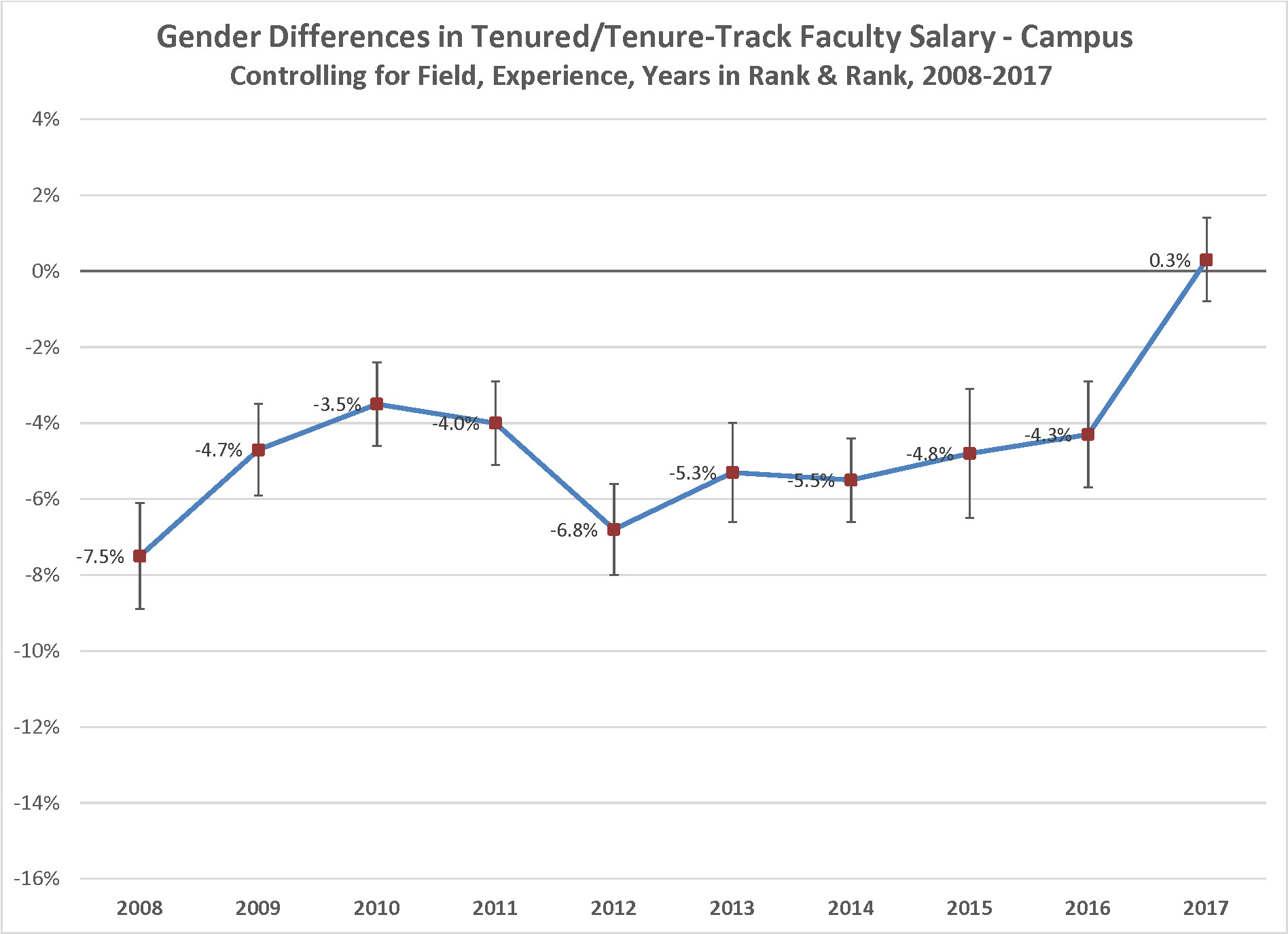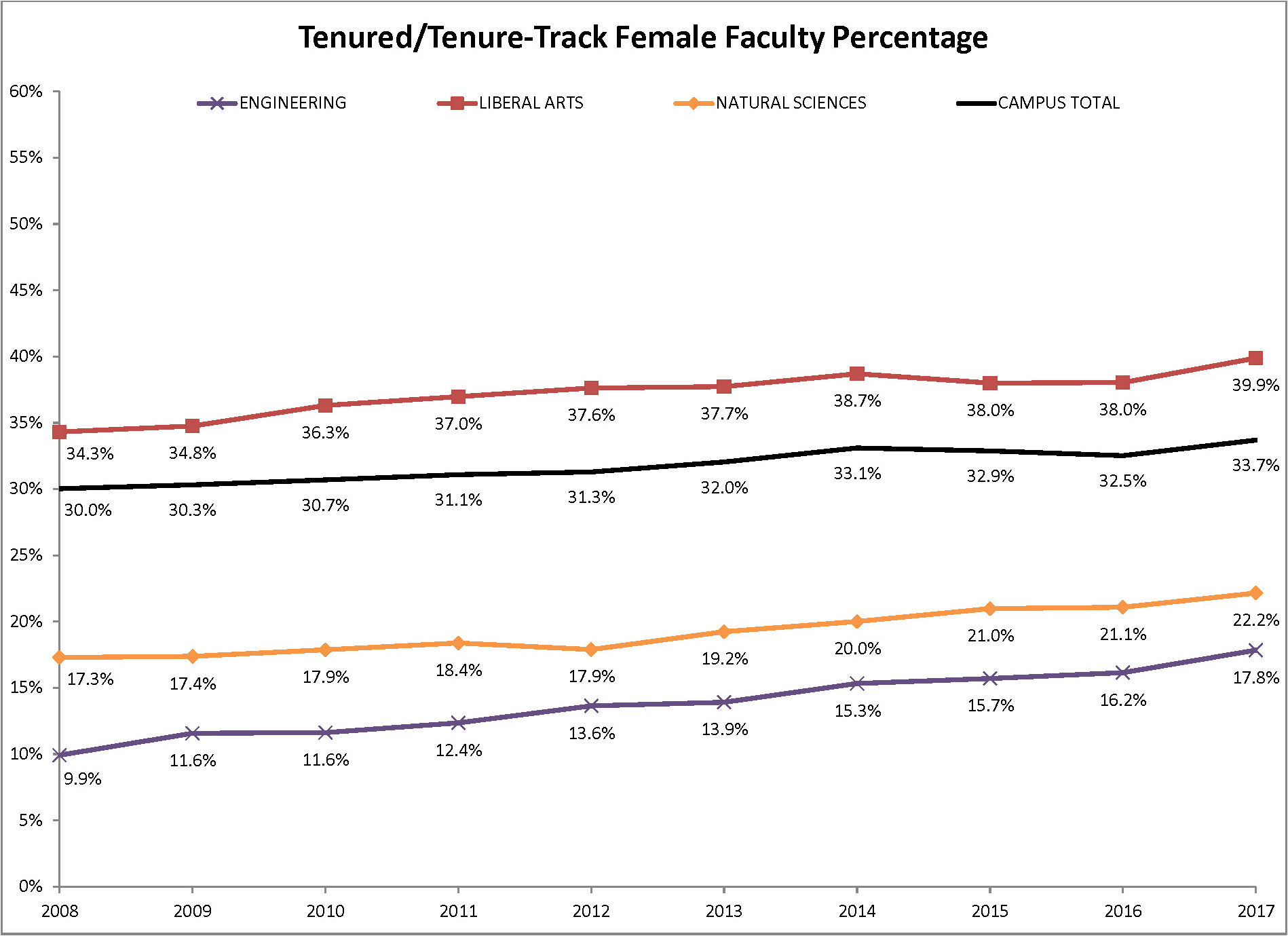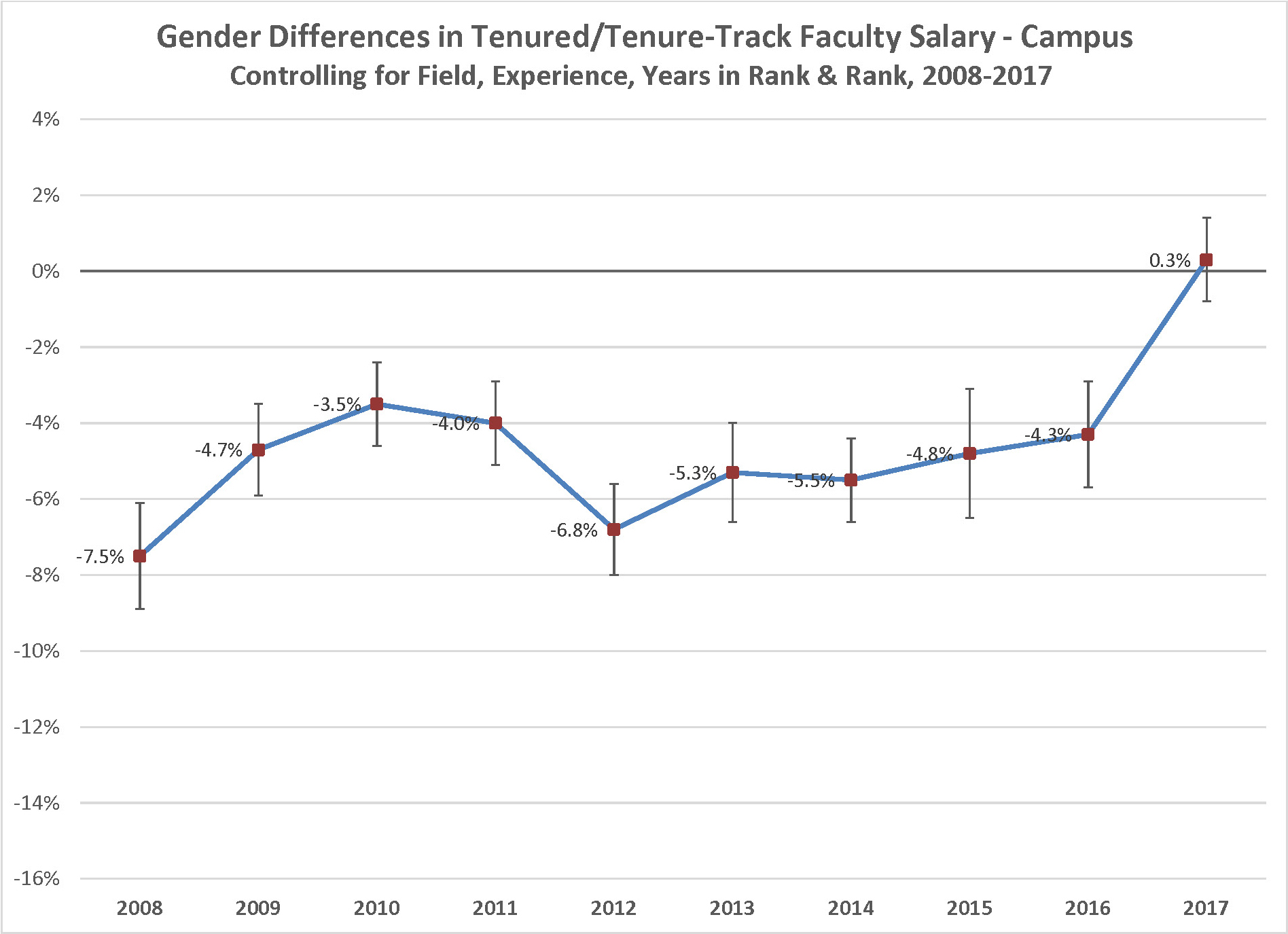Dear faculty colleagues,
One of the most significant faculty-related issues UT has struggled to address over the years is gender salary equity. This is a complex issue requiring rigorous analysis of the data.
I am writing today to share the encouraging progress we have made and the continuing efforts that inform our work ahead. The University Faculty Gender Equity Council (UFGEC) has provided leadership through its close collaboration with the colleges and schools by sharing best practices and addressing department-level issues.
Last year, the UFGEC Employment Issues Committee, co-chaired by Tasha Beretvas and Laura Starks, compared male and female faculty members by salary, headcount, and promotion and tenure rates. They recently presented their findings to the Faculty Council.
Key Campus-wide Findings
- In recent years, across tenured/tenure-track ranks, the difference between the salaries of female and male faculty members has decreased. In 2008, female faculty members’ salaries were, on average, 7.5 percent lower than males. In 2017, female faculty members’ salaries were, on average, 0.3 percent higher than those of their male colleagues.
- The percentage of female faculty members has increased slightly but steadily during the past 10 years, from 30.0 percent in 2008 to 33.7 percent in 2017.
- In 2017, female, nontenure-track lecturers’ salaries were, on average, 5.1 percent higher than their male colleagues’ salaries.
Although this progress is encouraging, there are several important caveats. These are aggregate results across all colleges and schools. I am working with academic leadership to distribute results at the college/school level with the intention of analyzing the data in a more granular fashion. This is necessary to provide an appropriate understanding of departmental context. It is important to keep in mind that this analysis is not able to incorporate or measure individual faculty contributions or performance, which is why departmental context is necessary to understand the findings.
The data make clear those areas where we must improve. The report indicates that gender differences persist in time-to-promotion from tenure-track assistant to tenured associate professor, as well as from associate to full professor.
An important next step is to analyze salary data by race and ethnicity. The university’s Council for Racial and Ethnic Equity and Diversity (CREED) is undertaking this work. I look forward to learning more about their findings later this academic year.
Through the UFGEC and CREED, and in partnership with leadership in the colleges and schools, I will continue to support efforts to ensure salary equity for faculty members across campus. I want to extend my appreciation to the members of the faculty committees, whose hard work has helped us identify and achieve improved equity on this campus. I commit to continued focus on and support of this important work.
Sincerely,
Maurie McInnis
Executive Vice President and Provost
The University of Texas at Austin


